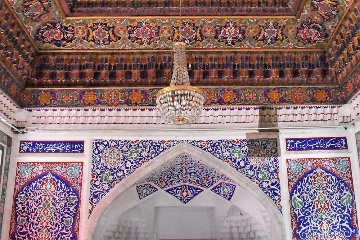Beneath the Fergana Valley's relentless sun, Khudayar Khan's palace glows like a cerulean mirage—its facade a hypnotic mosaic of 64 distinct tile patterns, each tessera whispering of craftsmen who traded artistry for survival under the Khan’s iron grip. Cross the threshold into the first courtyard, where the metallic tang of recent rain on 19th-century cobblestones mingles with ghostly traces of rosewater once sprinkled to mask the musk of fear. Here, in 1873, silk-robed envoys from St. Petersburg marveled at the very tiles their cannons would shatter three summers later, their polished boots treading the same flagstones where Khudayar's executioners dragged dissident poets.

Ascend a staircase lined with flaking gold leaf to the harem-i hass—the "special quarter" now reduced to skeletal archways after Bolshevik shells found their mark. Close your eyes: the rustle of 43 silk kaftans hangs suspended where concubines once bartered whispered alliances, their hennaed fingers clutching Quranic verses twisted to sanctify nightly "marriages." A lone pomegranate tree now grows through the bathhouse floor, its roots cracking the marble where the Khan’s favored wife soaked away the screams echoing from the tax collector’s chambers.
In the surviving west wing, museum displays float like spectral guests amidst the grandeur. A child's velvet slipper—stitched with Zoroastrian protective symbols—rests beside Tsarist rifles looted during the 1919 siege. Breathe deeply: the scent of Soviet-era linseed oil preserving 14th-century Korans merges with the musk of Karakul pelts torn from Khudayar's stolen throne.
Climb the watchtower's crumbling steps at dusk. Your shadow stretches across the seventh courtyard—once a stage for acrobats from Kashgar—now framing Uzbek schoolchildren sketching tile patterns into tablets. Below, the modern city's honking taxis trace the same routes as camel caravans bearing the Khan's plundered gold.
Some say Khudayar's ghost wanders the rooftop, coughing blood from his Herat deathbed into the wind that now carries the call to prayer. But the palace itself is the true phantom: a monument to beauty forged through brutality, its tiles glowing brighter with each passing century as if demanding we remember both the artist’s hand and the whip's lash.




































